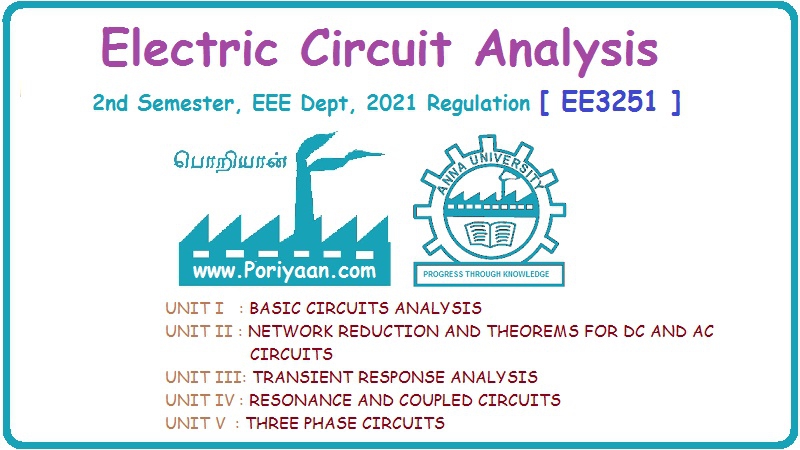Electric Circuit Analysis: Unit I: a. Introduction
Final value theorem
Statement, Formula
If f(t) and its derivative f'(t) are Laplace transformable, then the final value f(oo) of the function f(t) is given by
FINAL
VALUE THEOREM
Statement:
If
f(t) and its derivative f'(t) are Laplace transformable, then the final value
f(oo) of the function f(t) is given by

Table 4
To find Z(s) and Y(s) for R, L and
C.
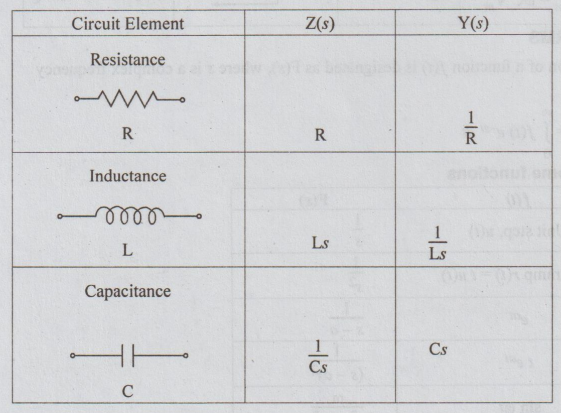
ENERGY SOURCES
Sources
of electrical energy are active elements. These are classified into two types.
They are (i) Voltage source and (ii) Current source.
In
each of the above two, there are again two types namely ideal and non-ideal
(Practical)
1.Voltage
sources: A practical voltage source consists of internal resistance
(source resistance) Rs in series with the source voltage VS.
The terminal voltage Vt across the load changes with change in the
load current. It is due to the voltage drop across RS.
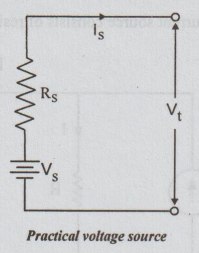
Vt
= Vs - Is Rs
As
I increases, Vt decreases. This relation between Is and Vt
is shown graphically as below.
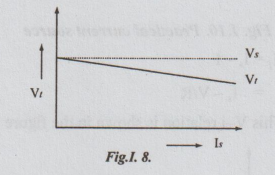
Ideal
Voltage Source:
Here
the terminal voltage Vt is independent of current. It is possible
only when RS= 0. Hence the internal resistance of an ideal voltage
source is Zero. The symbol for such a source and the terminal voltage - current
relations of such cases are shown below.
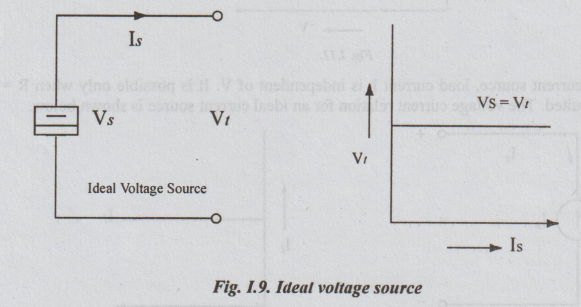
hobi
ne to VS = Vt bioto-nago el
2.
Current source: A practical current source consists of
resistance is parallel with the source.
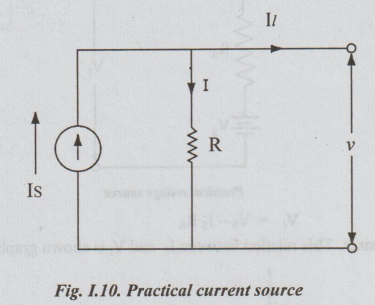
Il
= IS-I
=
IS - V/R
As
V increases, Il decreases. This V-i relation is shown in the figure
below.
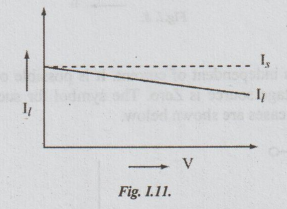
For
an ideal current source, load current Il is independent of V. It is
possible only when R = ∞, i.e., R is open-circuited. The voltage current
relation for an ideal current source is shown below.
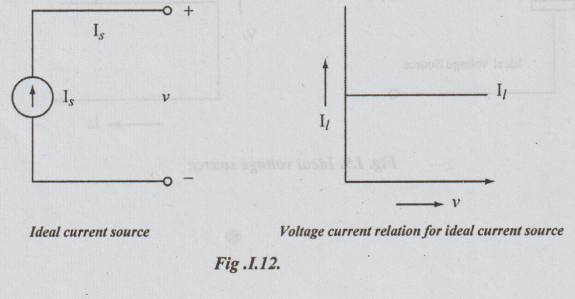
Electric Circuit Analysis: Unit I: a. Introduction : Tag: : Statement, Formula - Final value theorem
Related Topics
Related Subjects
Electric Circuit Analysis
EE3251 2nd Semester 2021 Regulation | 2nd Semester EEE Dept 2021 Regulation
